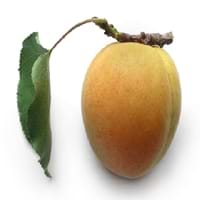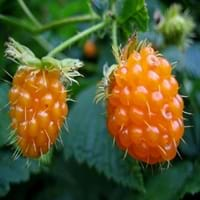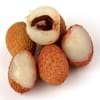Health Benefits
Asthma treatment, Cancer prevention, Controls blood pressure, Digestive aid, Heart care, Maintains hormonal balance, Regulation of heart rate, Skin cleansing, Skin rejuvenation
Cancer prevention, Improves stomach health, Weight loss properties
General Benefits
Boosts immune system, Controls blood pressure, Digestive aid, Eye care, Maintains healthy cholesterol level, Strengthens bones
Anti oxidant properties, Digestive aid, Eye care, Healing of wounds, Improves eye vision, Maintains healthy cholesterol level, Strengthens bones
Skin Benefits
Hydrates skin, Reduces wrinkles, Treatment of dark spots, Treatment of skin diseases
Anti-aging benefits, Reduces wrinkles
Hair Benefits
Good conditioner, Regulates hair growth, Rejuvenates scalp, Softening mask, Treatment of dandruff
Protects hair, Regulates hair growth
Allergy Symptoms
Abdominal cramps, Anaphylaxis, Breathing difficulty, Diarrhea, Itching of mouth, Itching sensation in throat, Swelling of mouth, tongue or lips, Vomiting, Wheezing
Abdominal pains, Itching, Swelling of mouth, tongue or lips
Side Effects
Dizziness, Headache, Nausea, Vomiting
Allergic reaction
Best Time to Eat
Best if taken as a breakfast (or empty stomach), As a snack in the late afternoon, Don't consume at night and before bed, Eat the fresh ones, avoid mixing with any other foods, don't eat after meal.
Best if taken as a breakfast (or empty stomach), As a snack in the late afternoon, Don't eat after meal, Morning time (before lunch)
Vitamin B5 (Pantothenic Acid)
Vitamin C (Ascorbic Acid)
Vitamin K (Phyllochinone)
Lutein+Zeaxanthin
Not Available
Phytosterol
Not Available
Calories in Fresh Fruit with Peel
Calories in Fresh Fruit without Peel
Not Available
Not Available
Calories in Frozen Form
Not Available
Not Available
Calories in Dried Form
Not Available
Calories in Canned Form
Not Available
Season
Summer
All seasons
Varieties
Gold Cot, Tilton, Wenatchee, Goldbar, Gold Kist, Tomcot, Harcot, Brittany Gold, Harglow, Hunza, Moorpark, Patterson and Royal Rosa
Golden ruby and Olympic Double
Color
Orange, Yellowish-orange
Pink, Pink red, Salmon, Salmon yellow
Taste
Smooth, Sweet
Sweet
Origin
China
North America
Soil Type
Well-drained
Loam
Climatic Conditions
Dry, Hot
Moist
Facts about
- 9 Jan is considered as the National Apricot Day.
- Apricots have been around for more than 4000 yrs.
- In latin, the meaning of apricot is 'precious'.
- 95% of apricots in the US are produced by California.
- The name salmon berry is due of the resemblance with 'salmon roe'.
- In 1 kg of fruit, there are total 315,250 seeds.
- Salmon berry tree leaves act as an excellent replacement for tea.
Spirits
Yes
Not Available
Cocktails
Yes
Not Available
Top Producer
Turkey
United States of America
Other Countries
Algeria, Egypt, France, Iran, Italy, Morocco, Pakistan, Spain, Uzbekistan
Canada, Mexico
Top Importer
United States of America
Not Available
Top Exporter
France
Not Available
Botanical Name
Prunus armeniaca
Rubus spectabilis
Synonym
Not Available
Not Available
Subkingdom
Tracheobionta
Tracheobionta
Division
Magnoliophyta
Magnoliophyta
Class
Magnoliopsida
Magnoliopsida
Species
P. armeniaca
R. spectabilis
Generic Group
Rose
Not Available
Compare Apricot and Salmonberry
It is important compare Apricot and Salmonberry as both the fruits have a different nutritional value. Their comparison can be done on the basis of their vitamin and mineral content, calories, benefits as well as characteristics, making it easier for us to choose the best fruit for our diet. Their general health benefits are as follows:
Apricot Benefits: boosts immune system, controls blood pressure, digestive aid, eye care, maintains healthy cholesterol level and strengthens bones.
Salmonberry Benefits: anti oxidant properties, digestive aid, eye care, healing of wounds, improves eye vision, maintains healthy cholesterol level and strengthens bones.
Fruits are also used as a remedy for various hair problems. The hair benefits of Apricot are: good conditioner, regulates hair growth, rejuvenates scalp, softening mask and treatment of dandruff and hair benefits of Salmonberry are: protects hair and regulates hair growth. Some fruits are known to cause allergic reactions. The allergy symptoms of first fruit are: abdominal cramps, anaphylaxis, breathing difficulty, diarrhea, itching of mouth, itching sensation in throat, swelling of mouth, tongue or lips, vomiting and wheezing and the symptoms of second fruit are: abdominal pains, itching and swelling of mouth, tongue or lips. Get sorted Apricot vs Salmonberry comparison with the help of fruit comparison tool by fruitvs.com.









